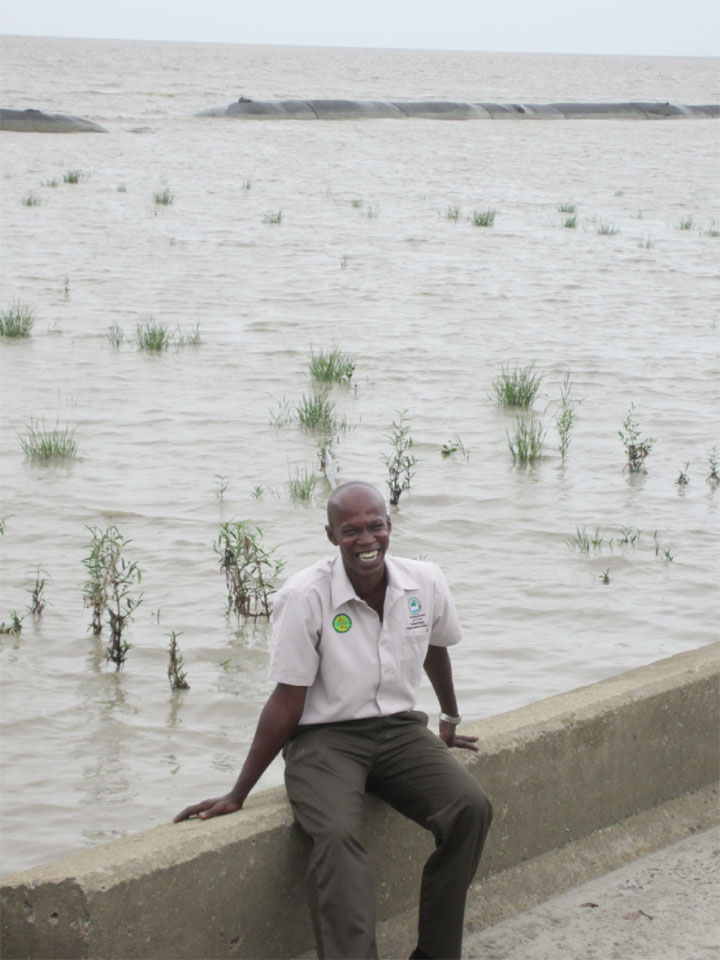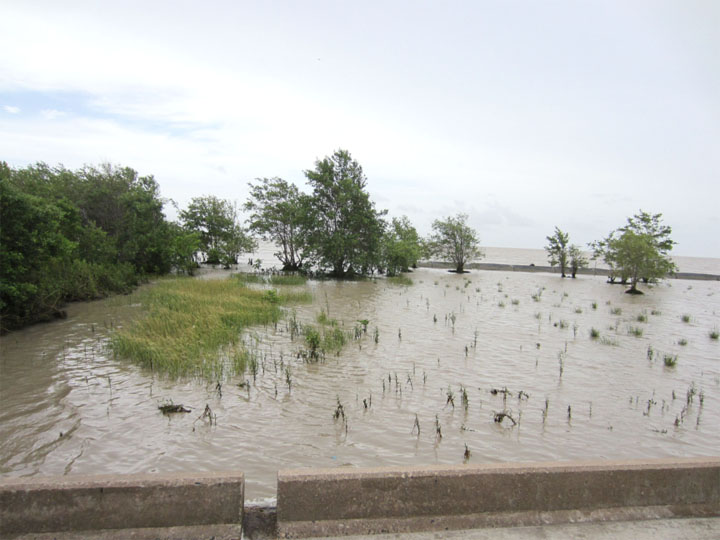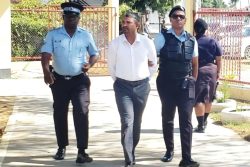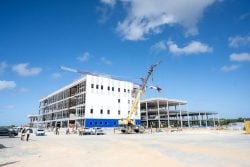Spindly mangrove seedlings scattered in the grey-brown waters of the Atlantic Ocean sway gently in the tiny currents lapping the foreshore at Victoria, East Coast Demerara. Here and there, tufts of green Spartina grass poke through the miniature waves, striving for sunlight.
It may not seem like a great deal to shout about but for those working with the Guyana Mangrove Restoration Project (GMRP), the greenery slowly rising above the waves means one thing: success. Several metres out, experimental breakwater-geotextile tubes, being tested for the first time in Guyana, break the force of the waves and allow the mangrove and grass seedling to take root and grow.

“That is all new generation growth, none of those were planted and it is because the geotubing is working,” Raymond Hinds says, his pride evident as he pointed to the sea wall and the light springs of mangroves and Spartina grass. The four-feet high geotextile tubes—two lengths of sediment-filled black tubing stretching for about 100 metres each—break the force of the waves and stabilize the foreshore, helping to slow erosion.
The $26 million project was implemented last November after 28,000 mangrove seedlings were washed away by strong waves. “When the coastal engineers visit to give us the go-ahead to start planting the black mangrove seedlings again in the area, they are going to be surprised that there is already so much re-growth,” Hinds, a ranger with the GMRP, said. “We had planted originally 28,000 seedlings in the area and they had all washed away,” he recalled.
The rapid erosion occurring at the area meant that the seedlings could not take hold.
Guyana is promoting the planting of mangroves to protect the coast and as a measure to deal with sea level rise caused by global warming. “The geotubes are expensive but they are built to last ten years and look it is working we haven’t done anything yet and those are seedlings and they are thriving,” Hinds said.
He explained that mangroves are beginning to grow in the area between the seawall and geotubing because the Sparina grass was able to trap seeds. The geotubes have also allowed for shore compaction, he added. “Before the mud would sink you and now you can walk out there. The geotubes are doing what they are supposed to be doing,” he stressed.
The rangy mangrove ranger declared that geo-textile tubes are a more economical investment than planting and risk losing the seedlings and having to re-start the process. He said that the geotube project has yielded results that the GMRP did not necessarily foresee so quickly.
The $1.1 billion project is being funded by the European Union and GMRP Chairperson Annette Arjoon-Martins said that as the EU’s involvement will be coming to an end next year, Government has agreed to fund the project indefinitely. She said that at the GMRP monthly statutory meeting, they will discuss the next planting season.

Mangrove seedlings have been planted in several areas. The GMRP has seen 100 percent survival of seedlings at Chateau Margot to Success, Le Ressouvenir to Felicity and Greenfield sites.
The geo-textile tubes were installed at Victoria after the original failure of the seedling to catch. For Section ‘C’, Enterprise, the GMRP has deemed that physical structures may be needed to foster growth and at Mon Repos it was discovered that survival was six percent, but there was evidence of trees being cut down in 2011. Hope Beach has a survival rate of 30 percent and the site is being continuously monitored for signs of natural regeneration which has occurred.




